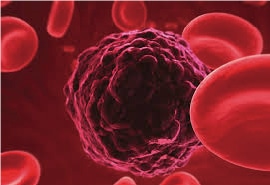Cancer Biomarker Antigens
Cancer Biomarkers Background

Related Resources
Tumor Immunity
Tumor Marker ELISA kit
Cancer biomarkers are substances that can be found in the body when cancer is present. They are usually found in the blood or urine. They can be products of cancer cells or of the body in response to cancer. Most tumor markers are proteins. Tumor markers are playing an increasingly important role in cancer detection and management. These laboratory-based tests are potentially useful in screening for early malignancy, aiding cancer diagnosis, determining prognosis, surveillance following curative surgery for cancer, up front predicting drug response or resistance, and monitoring therapy in advanced disease. In asymptomatic subjects, tumor markers are potentially used in screening for early malignancy. In symptomatic patients, markers may help in the differential diagnosis of benign and malignant disease. Following diagnosis and surgical removal of a malignancy, markers may be used for assessing prognosis, postoperative surveillance, therapy prediction and monitoring response to systemic therapy. Irrespective of its application, an ideal tumor marker should exhibit the following characteristics:
- possess a high positive and negative predictive value;
- have an inexpensive, simple, standardized and automated assay with clearly defined reference limits;
- be acceptable to subjects undergoing the test;
- have its clinical value validated in a large prospective trial.
Use of Markers in Screening for Cancer
Screening involves the detection of early disease or a preclinical state in subjects without signs or symptoms of disease. Unlike disease diagnosis, screening is performed on individuals without any clinical sign of disease (Figure 1).
Table 1. Biomarkers that have undergone or are currently undergoing evaluation
in screening asymptomatic subjects for cancer
| Marker or test | Malignancy |
|---|---|
| FOBT PSA CA 125 VMA/HVA AFP Pepsinogen HCG | Colorectal Prostate ovarian neuroblastoma hepatocellular1 gastric1 trophoblastic2 |
| V MA = Vanillylmandelic acid; HVA = homovanillic acid. 1: Only in high-risk areas/high-risk subjects. 2: In patients who have had a previous hydatidiform mole | |
Use of Markers as Diagnostic Aids for Cancer
As discussed above with screening, limited sensitivity for small or early cancers and lack of tumor specificity preclude the use of serum markers for the primary diagnosis of cancer. In a limited number of situations, however, markers may aid in the differential of benign and malignant disease (Figure 2).
Table 2. Markers that may be used for determining prognosis in different cancers
| Cancer | Marker(s) |
|---|---|
| Breast Germ cell Colorectal Prostate Ovarian | Oncotype DX, uPA/PAI-1 AFP, HCG, LDH CEA, MSI PSA CA 125 |
| L DH = Lactate dehydrogenase; MSI = microsatellite instability. | |
Use of Markers in Assessing Prognosis
Prognostic markers provide information on the likely outcome following diagnosis of a disease. Such markers may help avoid under treatment of patients with aggressive disease and overtreatment of those with indolent disease. Prognostic markers are most important in cancers that vary widely in their outcome such as prostate and breast cancer. In these cancers, prognostic markers may help identify those patients with aggressive disease that could benefit from additional therapies and simultaneously select those patients who may not require additional therapy (Figure 3).
Table 3. Serum markers that may be used in postoperative surveillance and monitoring therapy in different cancers
| Cancer | Marker(s) |
|---|---|
| Colorectal Hepatocellular Pancreatic Ovarian Breast Prostate Germ cell Lung (non-small cell) Lung (small cell) Melanoma Trophoblastic Thyroid (differentiated) | CEA AFP CA 19-9 CA 125 CA 15-3 PSA AFP, HCG CYFRA 21-1, SCC NSE, proGRP S100 HCG thyroglobulin |
| S CC = Squamous cell carcinoma; NSE = neuron-specific enolase. | |